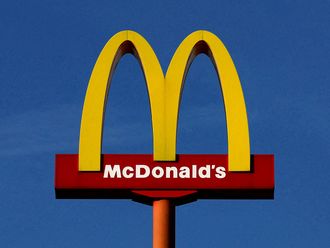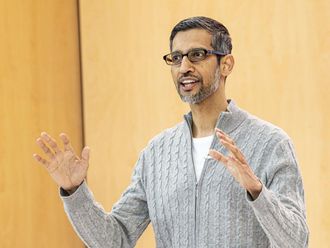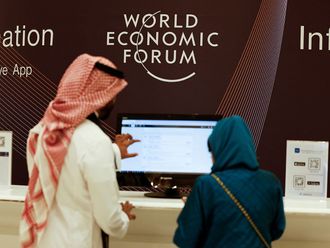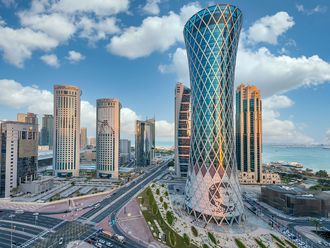Mumbai: With investors giving a thumbs up to India's budget, the outlook for the stock market has got a welcome boost as the focus shifts to robust growth potential and away from uncertainties that had clouded the bourse over the past few weeks.
For the record, the widely tracked top-30 Sensex notched its fourth biggest budget day gain on Friday as the budget raised tax breaks for personal incomes and trimmed the surcharge on corporate earnings. The rise lifted the benchmark into positive territory for the month after it had dropped over six per cent in January.
"The market's rally post the budget reflects a realistic and progressive F2011 budget," Morgan Stanley said. "The government is achieving fiscal consolidation programme which is positive for earnings growth and market performance."
Finance Minister Pranab Mukherjee boosted spending on roads, power and other creaking infrastructure by almost a quarter to Rs2.67 trillion (Dh212.8 billion) in the budget for the financial year beginning April. He also raised the investment for rural development by six per cent to Rs462 billion, which should keep the farm vote-banks happy.
To balance the expenditure, the 74-year-old veteran rolled back some of the stimulus implemented during the global downturn and set a target of Rs400 billion for divestment of holdings in state companies. The moves are expected to bring down the fiscal deficit to 5.5 per cent of GDP in 2010-11.
"The first challenge before us is to quickly revert to the high GDP growth path of nine per cent," he told parliament. A day earlier, the finance ministry said in a report economic growth should hit 8.25-8.75 per cent in 2010-11 and accelerate to over nine per cent the year after. Growth in 2009-10 is projected at 7.2-7.5 per cent.
The report said India's savings rate was at 32.5 per cent of GDP compared with 28 per cent in Japan, 30 per cent in South Korea and 38 per cent in Malaysia.
"Since these indicators are some of the strongest correlates of growth and do not fluctuate wildly, they speak well for India's medium-term growth prospects," the ministry said. "The savings rate is likely to rise further as the demographic dividend begins to pay off in India."
The finance ministry estimates 440 million people of India's population of 1.2 billion are under the age of 18, while the United Nations says India is expected to overtake as the world's most populous nation, with 1.7 billion people by 2050.
"It is entirely possible for India to move into the domain of double digit growth and even attempt to don the mantle of the fastest-growing economy in the world within the next four years," the ministry said. Foreign investors are likely to use this opportunity to build positions as India chases the objective of beating China's red-hot growth rates.
"On a risk-adjusted basis, we continue to believe that India represents one of the two compelling Asian investment cases for 2010, the other being Taiwan," BNP analysts Clive McDonnell and Manishi Raychaudhuri wrote in a report.
"Concerns over market valuations are overblown, in our view, with India's price-to-book value relative to China remaining below the long-term average," they said. India would need to grow faster than China to catch up with its per-capita output.
The country's per capita GDP was $2,972 in 2008, almost half of China's $5,962, according to the World Bank.
The increase in excise duty on cars was within expectations, there was nagging concern an increase in fuel levy and higher prices of products would accelerate inflation pressures.
Mukherjee said the rise in petrol and diesel prices would add 0. 41 percentage point to the wholesale price index-based inflation.
Geetha Bhaskaran is a journalist based in Mumbai.
Impact on the economy
- 32.5% of GDP is the savings rate of the country
- $2.97 is the per capita GDP in 2008, half of China's
- 0.41 is the rise in percentage point to the price index












